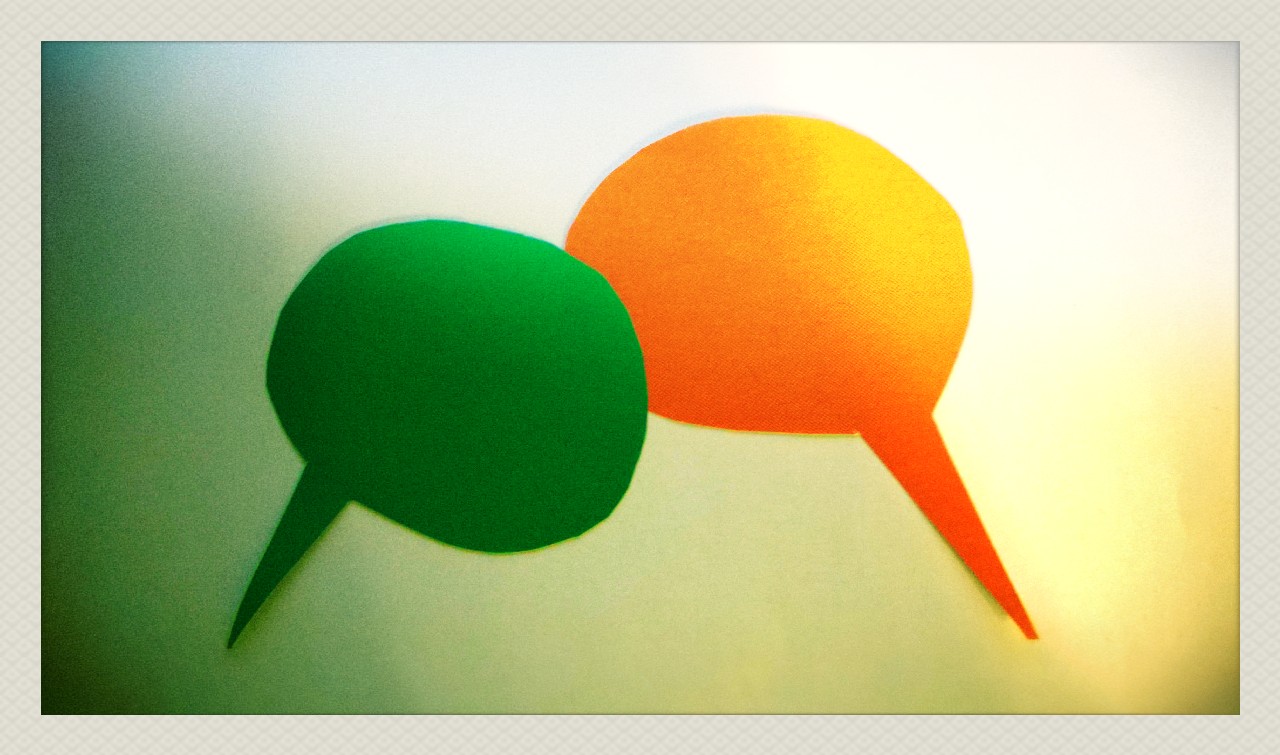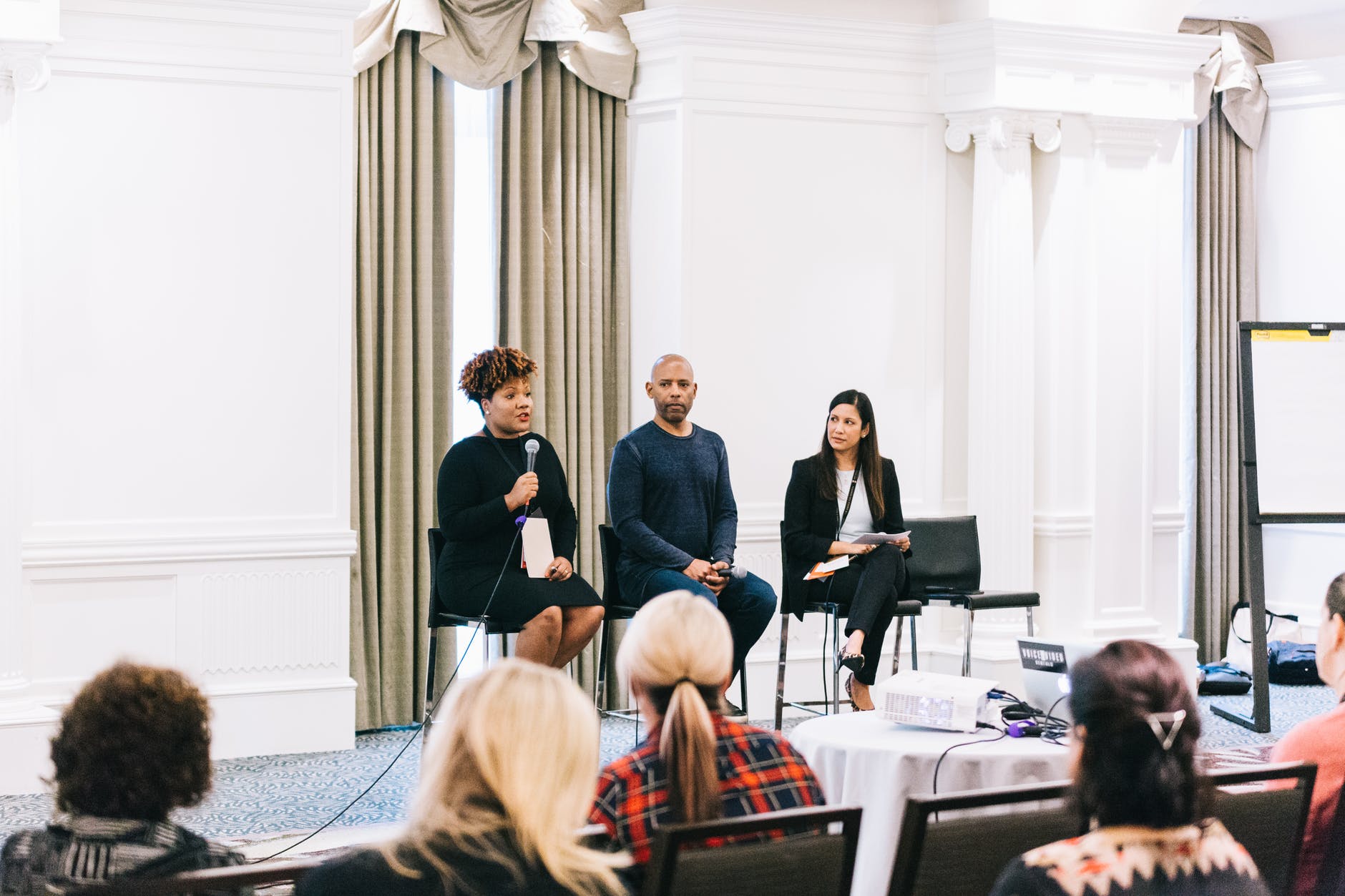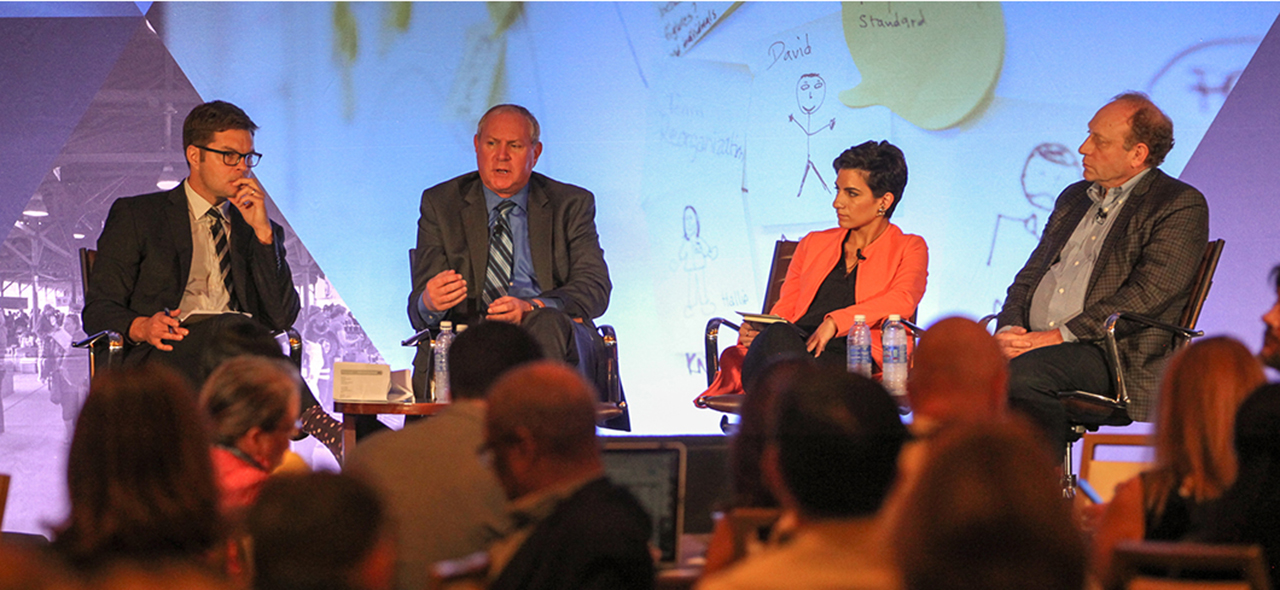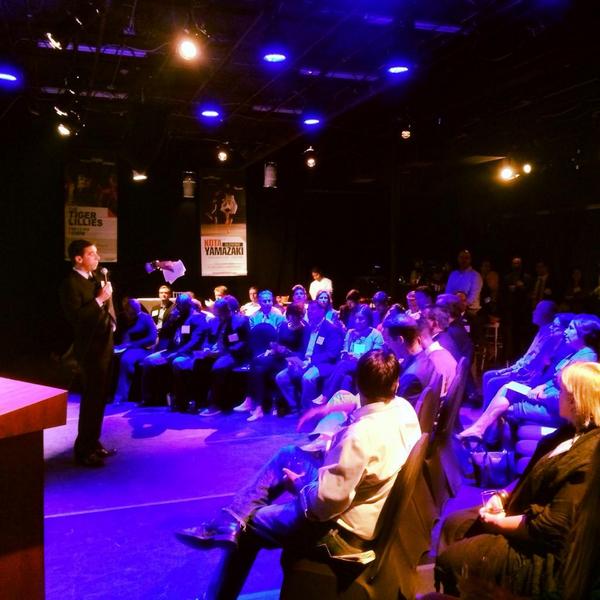
Having uncomfortable conversations: A new communications imperative
Conversation. Photo by Valery Kenski on Flickr.
Most people are uncomfortable talking about race, discrimination, privilege and power.
Communications professionals at social good organizations face this problem on many fronts. Inequality is connected to much of the work that foundations and nonprofits do – whether we are focused on criminal justice reform, the state of our schools, or the lack of quality information in a community.
Yet, we get tripped up by the need to be nonpartisan, while balancing the interests of a variety of groups and even our own upbringings. These competing interests can make it difficult to weigh in or take positions on the highly charged issues of race, class, gender, religion and sexual orientation (and that’s just getting started). We want to tackle the problem, but end up leaving out the history and the context. How do we produce real change in these areas if we don’t acknowledge their roots?
At the Communications Network annual conference in Detroit last month, I moderated a panel with two leading voices on diversity and inclusion: Tonya Mosley, an award-winning reporter at WBUR in Boston and a recent JSK Fellow at Stanford University, where she explored how unconscious bias affects journalism, and Leslie Miley, an engineering director at Slack, who left a job at Twitter very publicly over concerns about diversity in the company’s workforce. The two shared cross-sector experiences for nonprofit communicators looking to reach diverse audiences and create change.
The need for everyone to have open conversations played a big part in the discussion. These talks are a starting point for acknowledging gaps in understanding, building trust, recognizing our own biases and ultimately building communications campaigns that speak to people from many different backgrounds.
Here are some takeaways that communications teams can use to help advance hard conversations and create deeper connections with their communities:
Get comfortable with being uncomfortable
When Miley left Twitter, he put a spotlight on the lack of diversity in the tech industry and pushed people to confront these issues on a public stage. During the panel, he pointed to the participation of an organization’s leadership as being essential to starting a dialogue. “Talking about inclusion can be difficult and uncomfortable,” he said. “But when leaders are uncomfortable, it brings others into the fold.”
Slack has an “intentional” approach to diversity, he said. The company supports staff members who speak up and creates deliberate opportunities for everyone to listen and learn from audiences of all backgrounds. It also seeks out chances to improve diversity in tech – through its hiring practices, data sharing and brand.
When Slack won a recent Crunchie award from TechCrunch, the people who accepted it were all women of color, rather than the CTO or CEO. “That’s a powerful statement,” Miley said. “They were given a platform that white men get all the time by default.”

Start at the beginning
Mosley and Miley both stressed the importance of building inclusive outreach strategies upfront. Miley asked the audience to consider rampant online harassment issues that users face on Twitter, Blogger and Medium. He pointed out that the creators of those platforms – primarily white men – are not part of the demographics that commonly suffer abuse or harassment. As such, they didn’t talk about this problem with people affected by it, or build in safeguards to address it from the start. “If diverse people were in the room, it would have helped,” Miley said. “If there were women there, what would Medium, or Blogger, or Twitter look like today? It takes hundreds of people to mitigate these issues now.”
Nonprofit communicators face similar failures when diverse voices are not factored into planning. Diversity is not a short-term, one-time commitment. Attracting diverse grantees and audiences means adopting a culture of inclusion internally – and that starts by bringing diverse voices to the table. Mosley described this type of openness as “cultural humility,” accepting that you don’t have all the answers and listening to people of different ages, viewpoints, experiences and backgrounds to reach wide audiences.
Recognize unconscious bias
Mosley discovered through her fellowship that recognizing unconscious bias is part of being a good storyteller. Journalists are taught to be objective and fair she explained, but they are not taught how their experiences – for example, as a woman of color, or a white man, or a person of Asian descent – can influence their coverage.
“When someone is telling you that you’re biased, it goes against everything you might feel about yourself,” she said. At the same time having those conversations with yourself and others can work against blind spots and add new perspectives to storytelling, she added.
Acknowledging personal bias can also help to build trust and invite dialogue. It signals a willingness to learn and grow past old habits.
Talk about the numbers
One way to have hard conversations about inclusion is to bring data to the table, Miley said. When discussing the issue of police and race relations for example, Miley presents his own experiences as a black man in America alongside statistics. When the other party hears that black Americans are 2.5 times as likely as white Americans to be shot and killed by police officers, that news can diffuse a charged talk and build consensus. “I try to always go back to the data and tie it to my story,” he said.
Mosley agreed with Miley’s tactic of pairing data with storytelling, stressing the importance of humanizing the numbers. “When people hear numbers without the human story they tend to believe there is a reason for what’s happening,” she said. Her observations are based on a Stanford study that showed when people hear statistics that highlight disparities (i.e. black men are stopped by police more often than white men) they start to think that there’s a legitimate reason for the stops. So presenting data with real experiences like Miley’s is important to crafting stories that resonate.
Tech as a conversation starter
While technology is not a cure-all, both panelists were hopeful about using it to connect people and have deeper conversations. Mosley described her experience with a radio series she created titled “Black in Seattle” while working for a Seattle NPR station. The series focused on the experiences of black people in the city.
When she hosted a Twitter chat on the topic, the hashtag #BlackInSeattle trended above the #WorldSeries. At a community forum, attended by almost 400 people, she learned that some people had never listened to the show, but they knew about the hashtag.
“That really showed me the power that this medium has and how you can use social media to bring people together around issues and have deeper conversations,” she said.
Miley focused on Black Twitter—a community within Twitter dedicated to raising awareness and discussing race-related issues—as a forum that sparked a deep sense of belonging in him. He explained that he had little access to a strong black community before discovering Black Twitter. He grew up in San Jose, where blacks comprise less than 5 percent of the population, and working in the tech industry he was among the 1 percent of black tech staff at companies such as Apple and Google.
“Being able to just look on the screen and see black faces—people looking like me, and posting like me and telling stories—was eye opening. It was the first time I had a black community at my fingertips,” he said.
The work continues
Mosley’s mantra is “Diversity is a fact, inclusion is a practice and equity is a goal.”
This call to action is a reminder that our work is never finished. Inclusion is a daily practice that will continue as we strive to remove barriers, close gaps and ensure that equal opportunity is available to all.
At a time of loud division, it also represents a current reality: that the success of our work hinges on uniting people. Developing positive ways to have hard conversations both inside and outside our organizations is not just a tactic; it’s a communications imperative.
Anusha Alikhan is director of communications at Knight Foundation. Email her at [email protected] and follow her on Twitter @AnushaA100.
-
Communities / Article
-
-
Communities / Article
Recent Content
-
Artsarticle ·
-
Artsarticle ·
-
Artsarticle ·



